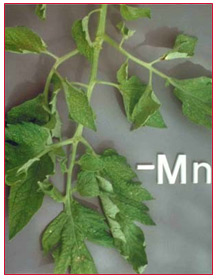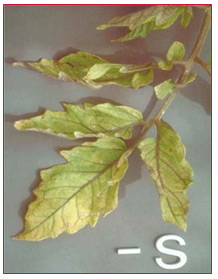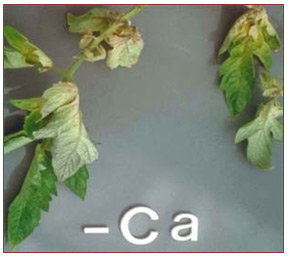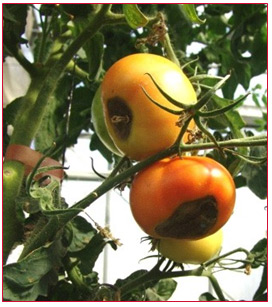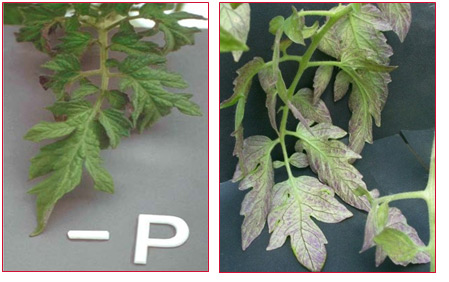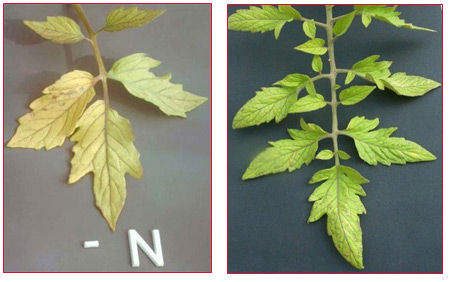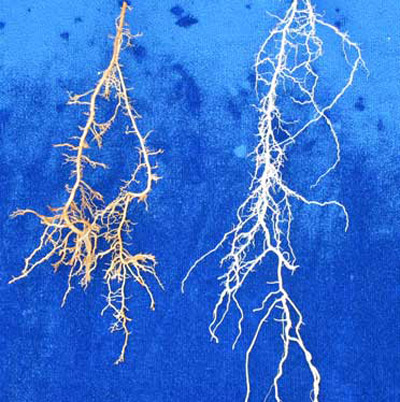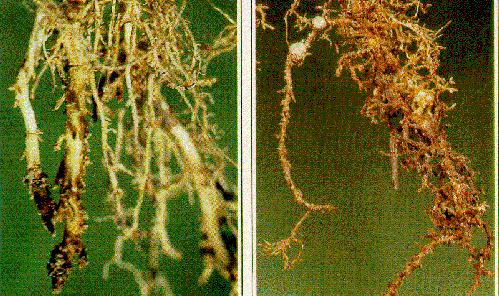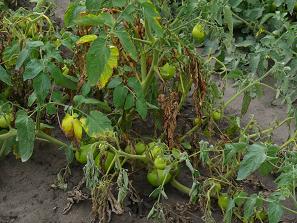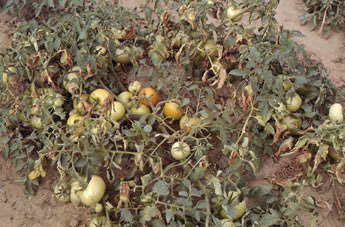Root-knot nematodes (Meloidogyne spp.) are minute, worm-like animals that are very common in soil. They have a wide host range, and cause problems in many annual and perennial crops. Tomatoes are among the most seriously affected, with the nematodes causing problems in all growing areas. Although this information is specific to tomatoes, the principles can be applied to most other annual crops.
Root-knot nematode juveniles are active, thread-like worms about 0.5 mm long. They are too small to be seen with the naked eye.
Root-knot nematode juveniles are active, thread-like worms about 0.5 mm long. They are too small to be seen with the naked eye.
Life cycle
The juveniles hatch from eggs, move through the soil and invade roots near the root tip. Occasionally they develop into males, but usually become spherical-shaped females.
The presence of developing nematodes in the root stimulates the surrounding tissues to enlarge and produce the galls typical of infection by this nematode. Mature female nematodes then lay hundreds of eggs on the root surface, which hatch in warm, moist soil to continue the life cycle.
Continued infection of galled tissue by second and later generations of nematodes causes the massive galls sometimes seen on plants such as tomatoes at the end of the growing season. The length of the life cycle depends on temperature and varies from 4-6 weeks in summer to 10-15 weeks in winter. Consequently, nematode multiplication and the degree of damage are greatest on crops grown from September to May.
Nematodes are basically aquatic animals and require a water film around soil particles before they can move. Also, nematode eggs will not hatch unless there is sufficient moisture in the soil. Thus, soil moisture conditions that are optimum for plant growth are also ideal for the development of root-knot nematode.
Distribution
There are more than 50 species of root-knot nematodes.
M. javanica and M. incognita are widespread, while
M. hapla is common only in areas of high elevation where it is cooler.
Although root-knot nematodes are difficult to identify, it is not important, for most practical purposes, to know which of the species is present. Species identification becomes particularly important when resistant varieties and crop rotation are being used as control practices because most plants are resistant to a limited range of species. Therefore, the crops chosen must be resistant to the species (or populations) present in a particular field.
Symptoms
Root-knot nematodes do not produce any specific above-ground symptoms. Affected plants have an unthrifty appearance and often show symptoms of stunting, wilting or chlorosis (yellowing). Symptoms are particularly severe when plants are infected soon after planting. However, more commonly, nematode populations do not build up until late in the season and plants grow normally until they reach maturity. Then they begin to wilt and die back with flowering, reducing fruit set and fruit development.
Below ground, the symptoms of root-knot nematodes are quite distinctive. Lumps or galls ranging in size from 1 to 10 mm in diameter, develop all over the roots. In severe infestations, heavily galled roots may rot away, leaving a poor root system with a few large galls.
Non-chemical control
Crop rotationRoot-knot problems increase and control becomes more difficult when tomatoes or other susceptible crops are grown without rotation.
However, crop rotation will not eliminate infestations because root-knot nematodes can remain in the soil as eggs for at least a year between host crops and most species can feed on a wide range of weeds. Nonetheless, rotation can significantly reduce losses when a field is planted again to a susceptible crop.
Winter cereals are useful because they are generally poor hosts and little nematode reproduction occurs during the cold winter months. It is more difficult to find summer crops with good resistance to root-knot nematode, though sorghum x Sudan grass hybrids (particularly cv. Jumbo) are useful against most populations of the nematode.
Fallow and cultivationRepeated cultivation kills nematodes in the upper soil layers by exposing them to mechanical abrasion, and the heating and drying action of the sun. If the field is maintained weed free, nematodes also die of starvation. In warm, moist soils in Queensland, a 4-6 month fallow may reduce root-knot nematode populations by more that 95 per cent. Longer fallow periods are not normally economically feasible and they increase the risk of soil erosion.
SanitationAs nematode populations have the capacity to increase rapidly, plough out plants as soon as the crop is harvested to prevent further multiplication. At this time, most of the nematode population is in the roots rather than the soil. Therefore, if these roots are removed from the field and destroyed (e.g. by burning), the nematode population immediately and substantially reduces.
Resistant varietiesTomato varieties with nematode resistance are available but not always commercially acceptable because of poor agronomic characteristics. Experimental breeding lines with nematode resistance are being tested and may be more suitable. These varieties provide adequate but not absolute protection against common populations of M. incognita and M. javanica. M. hapla and some races of M. incognita are sometimes capable of attacking resistant varieties.
Chemical control
SeedbedsIn crops established from seedlings, transplants must be free of root-knot nematodes. Before planting, fumigate all seedbeds with a registered chemical according to label directions.
Potting mixes
If peat, sand and other components are obtained from sources free of root-knot nematode and are not contaminated before use, the treatment of potting mixes for nematode control is unnecessary. Treatments for damping-off fungi (e.g. aerated steam at 60°C for 30 minutes) will also kill nematodes.
Field
If the management practices above are adopted, nematicides should only be needed in the field as a last resort (e.g. in sandy soils where tomatoes are particularly prone to nematode damage). Even in situations where root-knot nematode problems are usually severe, the use of good management practices reduces the nematode population pressure and gives nematicides a greater chance of providing effective control.
